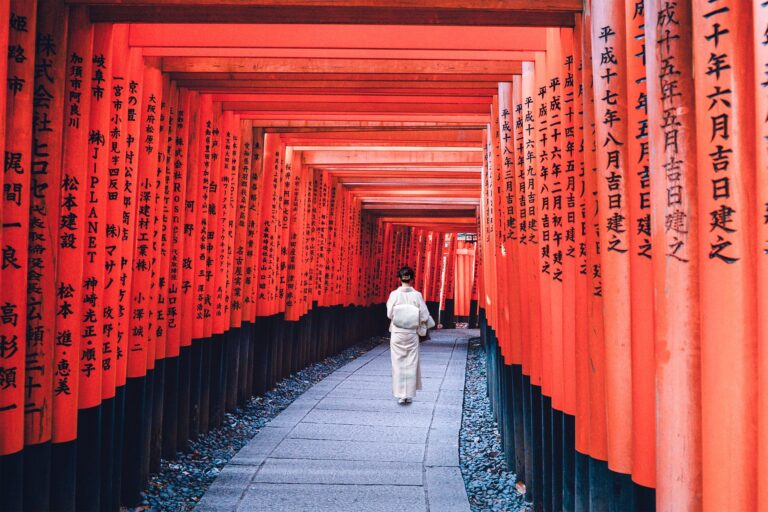
Japan is a country considered a top destination by people from around the world. Known for its beautiful natural scenery, bullet trains, kawaii culture, anime, and a deep sense of respect for its culture, it’s no surprise that Japan has seen the greatest number of tourists this year compared to the last couple of years. I was immensely fascinated by everything that welcomed me in Japan, but of course, there were a few things that undeniably shocked me as well.
No Public Garbage Cans
This is probably a sentiment shared by many, with several blogs and Reddit posts discussing how clean the country is despite not having a garbage can on every street corner. The only time I remember seeing trash on the sidewalk was after attending a big street festival with food stalls lining the streets and endless lines of people waiting to buy their own servings. You’re expected to keep your trash in your bag and throw it away when you get home. You can also look for vending machines, which sometimes have small trash cans.
After further research, I learned that there used to be trash bins available in public spaces but were later banned after news of dangerous devices like explosives found hidden in several trash cans. Also, it’s strongly discouraged to eat while walking, so make sure to find a bench at the park or stand outside a convenience store or an area with fewer people if you absolutely need to eat.
So Many Crows
In my home country, crows were not a common sight, and I first laid my eyes on one right here in Japan. In fact, the first thing I noticed upon arriving at the airport and walking to my first apartment was how many crows were sitting comfortably on several power lines right above us. I admit, I was quite frightened and unnerved at first, as I had only previously seen them in horror movies, usually linked to bad omens and other unfortunate things. After a while, seeing them became a regular occurrence and no longer gave me goosebumps.
There was one incident, though, that left a very strong impression on me – I was having a picnic with a friend in Yoyogi Park, eating a sandwich and drinking a bottle of tea when a crow literally dove and snatched one of the sandwiches from our container next to us. As you can imagine, there was a moment of panic, and we wasted no time packing up and scurrying away! At that moment, I swore that never again would I be seen eating a mere candy within a 20-mile radius of a crow.

Vending Machines
Who doesn’t love these wonderful Japanese food storages that you can find in almost every part of the country? There are vending machines for hot and cold beverages, as well as small packaged snacks, that you can munch on if you happen to be in an area far from any shops or restaurants. It’s amazing how they are always kept clean and fully stocked, no matter what day or season it is all year round.
Before coming to Japan, I had seen tons of videos and read articles about the prevalence of vending machines in Japan, some very unique ones selling Pokémon cards, little figurines, and even insect snacks! It’s interesting to see just how many vending machines there are, especially in the most populated areas like Shinjuku or Shibuya, and how even in less inhabited towns hours away from Tokyo, you can find one mostly in the train stations.
Matcha and Red Beans
Matcha and red beans are ingrained in Japanese culture and are considered some of the most common types of Japanese food you will ever find. Green tea is traditionally used in tea ceremonies and served on formal occasions. It can also be found in almost every Japanese household as it is a staple of Japanese tea-drinking culture. I was surprised, however, by how it is used in almost every type of snack available. You can find matcha-flavored bread, cake, ice cream, snacks, and many more! They truly love their matcha!
I love matcha as well, but I can definitely say that I experienced culture shock after seeing shelves of various matcha-flavored bread in the aisles of the supermarket. Red beans can also be found in all types of Japanese dishes, bread, and snacks. It reminded me of ube, better known as yam, which is regarded in the same manner in my country and can be found in almost every type of dessert.
Japanese Bidet
Japanese toilets are revolutionary and have changed the perception of expats who have been blessed to use this amazing product. The concept of washing after doing your business is not new to me as a Southeast Asian, where pails of water can be found in every bathroom in my home country. The Japanese washlet, however, has added features that include automatic flushes, different sound effects, and of course, having the water available to fully clean yourself. It even includes a faucet with running water on top of it that helps conserve water by recycling it and using it in the flushing process. It is slowly gaining popularity in other countries that have started installing similar types of bidets in their homes due to its added conveniences and functions.
Quiet and Crowded Trains
When I first started working in Japan, I didn’t know if I was going to survive rush hour. It felt like the Hunger Games, and I often wondered if I would make it out alive. With thousands of people crammed into a rectangular metal vehicle, there was barely any space to move or breathe. I often took one of the most crowded trains, the Joban-Chiyoda Line, from Chiba to Tokyo. There were days when I was lucky enough to get a seat after racing and competing with a dozen other commuters, but most of the time, that wasn’t the case.
I was quite miserable during the first few months of my daily commute, but everything changed after a friend gave me some tips and hacks on how to be as comfortable as possible. I’m guessing many people have already figured this out, but here’s the trick: as soon as you step foot onto the train, stand as far away from the door as possible. Stand in the middle of the aisle facing the chairs instead of the space in front of the doors, as that’s where all the bone-crushing moments on the train happen. I’ve been doing that ever since, even if I sometimes need to squeeze myself in. It pays off, as the journey becomes a lot more bearable in the end, and I even have plenty of space between me and the next person.
Lines and Queues
I’ve always admired how respectful and patient Japanese people are when it comes to following queues and lining up properly. Whether it’s at the station while waiting for the train to arrive, on the escalator or the staircase where everyone uses the designated walking area, or even in a busy clinic or hospital where patients sit patiently until their names are called, waiting for a spot or a table in their favorite restaurant as they chat and sit outside the shop front. I’ve developed this habit and have become a lot more consistent with it since I moved to Japan. I’ve always waited for my turn and been respectful towards others, even when I was living outside of Japan, but this habit has become second nature and something I share with newly arrived expats as well. This culture absolutely shocked me but in the best way possible.
Living in Japan is one of the most satisfying experiences I could have ever imagined. Some things are probably customary in your own country and come as no surprise to you upon arriving in Japan, unlike my personal experience. However, the things I mentioned are purely based on my previous culture and lifestyle in my home country, hence it will not be the same for everyone. Without a doubt, though, these things have still occasionally caught me off guard, but not in a bad way, of course!















